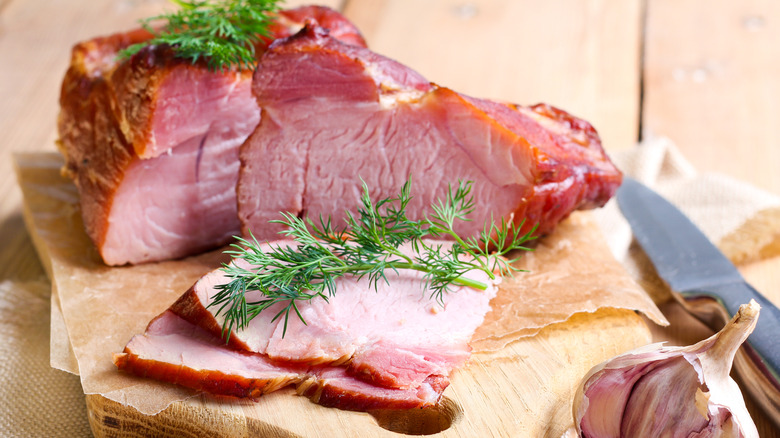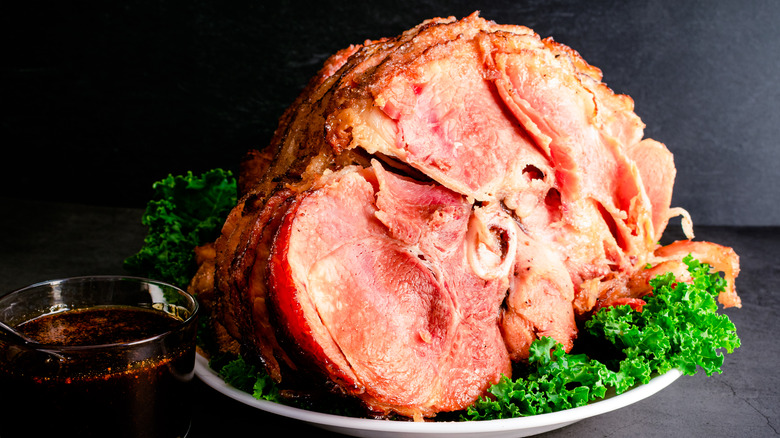Why You Should Always Soak Country Ham Before Cooking
If you and your family celebrate Easter, you probably do one or all of the following: a church service, an Easter egg hunt, and a celebratory feast. And, if you do have a big meal, your centerpiece (your protein), is likely one of two things. Whereas turkey is the dominion of Thanksgiving, Easter in the U.S. usually means lamb or ham on the table. However, Lamb, despite being symbolic, can be divisive. The characteristic and pronounced flavor — some describe it as gamy — is not to everyone's liking. Ham, by comparison, is rather mild while still being quite rich, which likely explains why it is favored by 67% of Americans, according to a study from National Pork Board, via The Columbus Dispatch.
While the preponderance of hams consumed in the U.S. are wet-cured, dry-cured hams, which are more popular and prevalent in the south, where they're often called country hams, are catching on in popularity, in part due to their similarity to popular European hams, like Prosciutto di Parma and Jamón Serrano. Country ham can also be sliced thin like imported hams (although it is typically pan-fried and cut thicker) and is served much the same way.
To serve a country ham whole as one would for a large Easter meal, it is important, due to its intense saltiness, to properly prepare it. That includes washing and soaking the ham in cold water anywhere from 12 to 36 hours, depending on taste and the size of the ham, to draw out the salt.
Soak out the salt
Salt-curing hams and other foods as a means to mitigate spoilage has been around since at least 160 BCE. The American South sits in a lucky span of latitude known informally as the "Ham Belt" that boasts temperatures ideal for curing ham. Unsurprisingly, the regions renowned for producing prosciutto and jamon are also found within the "Ham Belt."
One of the largest producers of country ham, per Zippia, is Virginia-based Smithfield. While they produce wet-cured, sweet city hams as well as turkey, Smithfield is primarily known for their 6 to 12 month aged hickory-smoked country hams. To prepare one of their hams, their website suggests a soak of at least 24 hours, changing out the water every four hours. After soaking, the ham should be scrubbed, then boiled or baked to an internal temperature of 163 degrees Fahrenheit is reached — at which point a glaze can be applied.
An interesting alternative cooking method involves soaking the ham overnight and bringing it to a boil in a pot of fresh water. Once the ham has boiled for 30 minutes, the pot is removed completely from the stove, wrapped in an insulation of newspapers, towels, and blankets and allowed to rest overnight in its broth. The result is a tender, slow-cooked ham that gets finished with a golden-brown and sweet cracker crust.

